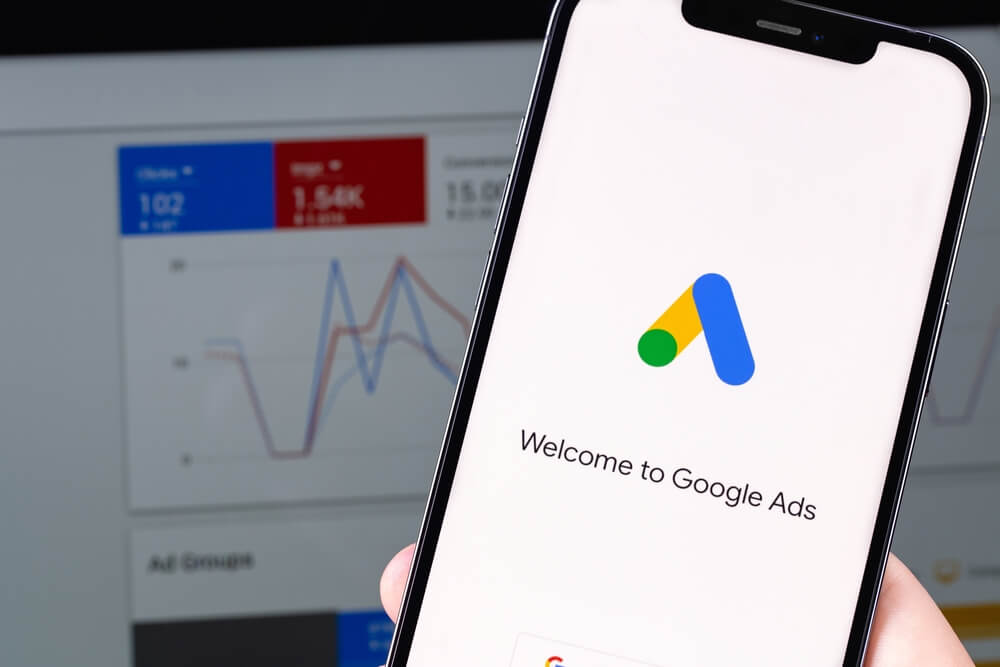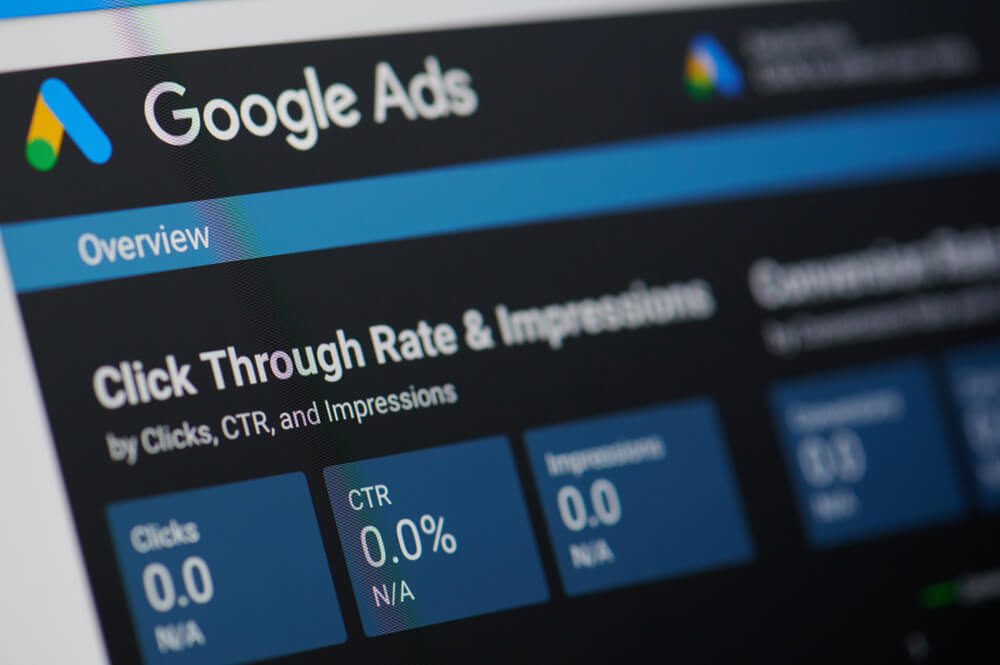
Bullet-Proof Google Product Listing Ads Optimization Tactics
- Product feed optimization
- Breaking products into ad groups
- Removing PLAs for unprofitable products
- Leveraging negative keywords
- Adjusting bids, and more!
 Google Product Listings are like a window display in a fancy boutique, showcasing your product images, titles, and prices in a visually appealing carousel format at the top of search engine result pages (SERPs). It’s like a magnet for potential customers who cannot resist clicking to see more.
But here is the thing to keep in mind: just like with any advertising campaign, you need to optimize your Google Product Listing Ads to get the most out of your investment. And that’s where a PPC Agency can help you with optimizing your product feed.
Your product feed is the backbone of your Product Listing Ads campaign. It is the source of all the juicy details about your products, such as titles, descriptions, prices, images, and other attributes. So, if your product feed is lacking, your PLAs will not perform as well.
Here are some tips to optimize your product feed for Google PLAs:
Google Product Listings are like a window display in a fancy boutique, showcasing your product images, titles, and prices in a visually appealing carousel format at the top of search engine result pages (SERPs). It’s like a magnet for potential customers who cannot resist clicking to see more.
But here is the thing to keep in mind: just like with any advertising campaign, you need to optimize your Google Product Listing Ads to get the most out of your investment. And that’s where a PPC Agency can help you with optimizing your product feed.
Your product feed is the backbone of your Product Listing Ads campaign. It is the source of all the juicy details about your products, such as titles, descriptions, prices, images, and other attributes. So, if your product feed is lacking, your PLAs will not perform as well.
Here are some tips to optimize your product feed for Google PLAs:
- Current Information: Make sure all of your product information is accurate, complete, and up-to-date. This may include information such as product titles, descriptions, images, prices, and other details. Ensure that the product images are high quality and visually appealing. Clear, high-quality images not only make your products more attractive to potential customers but also improve the click-through rate (CTR) of the PLAs.Think of it like dressing up your products for a first date – you want to put your best foot forward.
- Product Categories: Use relevant and specific product categories to make it easier for potential customers to find your products. Google has created a master list of product categories that covers almost everything under the sun. From electronics to clothing to pet supplies, there is a category for almost every product you can think of. When you use these categories to organize your products, it is easier for Google to understand what you are selling and match it to relevant search queries.
- GTINs and MPNs: Include unique product identifiers like Global Trade Item Numbers (GTIN) or Manufacturer Part Numbers (MPN), and a brand name of the item to help Google match your products with user search queries. This is like giving your products a personal ID so they can easily be found. For example, if you sell computer parts, you could include an MPN for each part, making it easier for search engines like Google to match your product. In other words, your customer will most likely find your specific part over your competitors. By including GTINs, MPNs, and your brand name in your product feed, you give your products the best chance to be found and bought by your audience.
- Keyword Optimizations: Optimize your product titles with relevant keywords, keeping them concise and descriptive. Think of it like writing a catchy headline for a newspaper article – you want to simultaneously grab attention and provide information. So, use relevant keywords that accurately describe your product, and keep your title concise and to the point. For example, if you operate a local shoe store and you sell running shoes, you may want to use keywords like “running shoes” or “marathon shoes” to attract your audience. You may also want to make your title stand out by including details about your shoes that make them unique like “ultra comfort insoles” or “”Marathon Runners’ #1 choice.”
- Product Reviews: Think about the way you shop online: you search and most likely you read reviews of the product. Reviews provide valuable insight into the quality of a product and typically guide you to make an informed decision. Reviews are a seal of approval from happy customers, and they go a long way in building trust. Including product reviews is an important component to Google Product Listing Ads optimization. Having a group of satisfied customers vouch for the quality and value of your products matters to prospective customers. When people see that others have had a positive experience with your product, they are more likely to trust that your products are high-quality and worth buying. Plus, reviews can provide valuable feedback that you can use to improve your products and better meet the needs of your customers.
 It’s not enough to simply have a great product feed – your campaign also needs to be optimized for maximum performance.
So, what does a Google Product Listing Ad Campaign optimization involve? It is a process of fine-tuning your campaign settings, targeting options, and ad content to improve your ad’s relevance, visability, and performance. This includes analyzing your campaign data, testing different ad variations, and making adjustments based on what converts and what does not.
This is an important point to remember: campaign optimization is not a set it and forget it process. It requires regular monitoring and adjustments to make sure your campaign is always performing at its best. This means keeping an eye on your ad spend, click-through-rates, and other key performance indicators.
Let’s take a look at some steps you can take to optimize your Google Product Listing Ad campaign:
It’s not enough to simply have a great product feed – your campaign also needs to be optimized for maximum performance.
So, what does a Google Product Listing Ad Campaign optimization involve? It is a process of fine-tuning your campaign settings, targeting options, and ad content to improve your ad’s relevance, visability, and performance. This includes analyzing your campaign data, testing different ad variations, and making adjustments based on what converts and what does not.
This is an important point to remember: campaign optimization is not a set it and forget it process. It requires regular monitoring and adjustments to make sure your campaign is always performing at its best. This means keeping an eye on your ad spend, click-through-rates, and other key performance indicators.
Let’s take a look at some steps you can take to optimize your Google Product Listing Ad campaign:
- Top Performers: Take a look at your ad groups and identify which ones are performing best. By analyzing your ad group data, you can get a better sense of which products are performing best and driving the most traffic to your website. After you identify your top-performing ad campaign, you want to make sure it is getting plenty of exposure. This may mean adjusting your bids and targeting options to ensure that your ads are showing up for relevant search queries and in the right location. It’s like shining a spotlight on your products and making sure your customers see them.
- Bidding: Bid adjustments are a strategic tool that can help you maximize your return on investment and ensure your PLAs are performing at their best. If your data shows that certain products of geographic locations are performing particularly well, you can use bid adjustments to give them a boost. This helps ensure that your best products are getting the best exposure, while also maximizing your sales.
- Landing Page Optimizations: If your landing page is unoptimized, slow to load, or difficult to navigate, your potential customers may quickly abandon your site without making a purchase. However, a well-optimized landing page will ensure that your customers are greeted with a pleasant and seamless experience that encourages them to take the desired action, such as making a purchase, filling out a form, or subscribing to a service.
- Budgeting: Your budget is your campaign’s fuel. Just as you would not want to run out of gas on the way to the gas station, you do not want your campaign to run out of budget mid-way through your timeline. Setting budgets is like setting boundaries for your campaigns, giving you a sense of control and direction. It helps you allocate your resources efficiently and ensures you are getting the most out of your dollar.
- Targeting Optimization: Using our example before about running shoes, you do not want your Google PLA to show up in front of people who are not interested in running shoes, correct? That’s where ad targeting optimization comes into play. Ad targeting allows you to focus your ads on the people who are most likely to be interested in your products.
 One of the best practices for Google Product Listing Ads optimization is breaking your product catalog into ad groups. This is a way of organizing your products into smaller, targeted groups that you can tailor your ads and bidding strategies around. When you break your products down into ad groups, you ensure that your ads are reaching your target audience, which can ultimately lead to more clicks, conversions, and sales. Let’s take a look at some Ad Group examples:
One of the best practices for Google Product Listing Ads optimization is breaking your product catalog into ad groups. This is a way of organizing your products into smaller, targeted groups that you can tailor your ads and bidding strategies around. When you break your products down into ad groups, you ensure that your ads are reaching your target audience, which can ultimately lead to more clicks, conversions, and sales. Let’s take a look at some Ad Group examples:
- By Category: You could have ad groups for each major product category in your catalog, such as “Apparel”, “Electronics”, or “Home & Garden.” Within each ad group, you can target specific product types, brands, or attributes.
1. By Performance: With a Google PLA campaign, you want to make sure you are getting the most out of your ad spend and one way to do that is by organizing your ad groups based on performance. By creating ad groups that focus on your best-selling products, you can ensure that your ad spend is being allocated to the products that drive the most sales to your business. This also makes it easier to adjust bids for specific products based on their performance, as you can quickly identify which products are driving the most clicks, impressions, and conversions.
2. By Season: For products that have a strong seasonal demand (for example, back-to-school, Halloween), you can create ad groups specifically for that time period. For example, if you sell Halloween costumes, you may want to create a Halloween-specific ad group. You can include all of your Halloween-related products, such as costumes, decorations, and candy. This ad group should have a separate budget and bidding strategy that aligns with the higher demand and competition that occurs during this popular season.
Creating a seasonal ad group allows you to tailor your messaging and creative specifically to the holiday or event. You can use language and imagery that resonates with customers during this time, which can increase the likelihood they will click on your ad and make a purchase. Moreover, seasonal ad groups also enable you to track the performance of your seasonal campaigns. You can analyze data such as click-through rates, conversions, and generated sales to determine the effectiveness of your campaign. This data can then be used to make informed decisions about future seasonal campaigns, such as which products to feature, which messaging resonated the most with customers, and what adjustments should be made to your bidding strategy. Breaking your catalog into ad groups can have numerous benefits that can help improve the performance of your Google Product Listing Ads and maximize your return on investment. There are four main benefits why breaking your catalog into ad groups is beneficial:1. Greater Control: One of the main benefits of breaking your catalog into ad groups is greater control. By segmenting your products into specific groups, you can have more control over which products are shown in which ads, and how much you are willing to pay for each click. For example, if you have a category of high-margin products, you may want to set a higher bid for those products to ensure they appear in top positions.
2. Better Relevance: Another benefit is better relevancy. When you target your ads to specific product groups, you can write more relevant ad copy and showcase the products that are most likely to appeal to your target audience. This can improve your click-through rate and ultimately lead to more conversions.
3. Easier Management: Breaking your catalog into ad groups also makes management easier. When your catalog is organized into specific ad groups, it is easier to manage your bids, monitor performance, and make optimizations. You can quickly identify which ad groups are performing well and allocate more budget accordingly, or make adjustments to underperforming ad groups to improve their performance.
4. Improve Campaign Performance: Breaking your catalog into ad groups can help you improve your overall campaign performance by allowing you to tailor your bidding and ad copy to specific groups of products. By focusing on your best-performing products and bidding more aggressively on them, you can increase your ROI and drive more sales.
Overall, breaking your catalog into ad groups can ultimately lead to better campaign performance and increased revenue for your business. Boost your ad performance: A/B Testing for Google Product Listing Ads Another important factor for Google Product Listing Ads optimization is to establish which ads work. This involves monitoring the performance of the ads and making adjustments as needed. That’s where A/B testing comes in. A/B testing is the process of comparing two different versions of an ad to see which one performs better. In the context of Google PLA campaigns, this means testing two different ads for the same product to see which one generates more clicks, conversions, and ultimately, sales.
To conduct an A/B test, you need to create two different ads that are similar in most aspects except for one variable. This variable could be the ad copy, the product image, the call-to-action, or any other element of the ad. Then, you run both ads simultaneously and monitor their performance over a set period of time.
Once the A/B test is complete, you can analyze the data to see which ad performed better. You can compare metrics such as click-through rates, cost-per-clicks, and return on ad spend. Based on these metrics, you can make an informed decision about which ad to use moving forward.
Stop wasting money: Remove unprofitable products from your PLAs.
You now understand how Google Product Listing Ads are a great way to drive traffic to your website. However, not all products are created equal. Some of your products may have a lower profit margin than others, or they may not sell as well as you anticipated. In these cases, you may want to consider removing these products from your Google PLAs.
Removing Google PLAs for unprofitable products means taking these products out of your product feed and campaign. It’s a necessary step if you want to optimize their Google PLAs for maximum ROI. If you continue to market unprofitable products, you may end up wasting money on your PLA without seeing any return on investment.
In addition to removing unprofitable products, it is also important to regularly review your product catalog and update your PLAs accordingly. This will ensure that you are always advertising your best-selling and most profitable products.
Why negative keywords are a must for a successful PLA campaign
As you have learned by now, one of the most important aspects of running a successful online advertising campaign is knowing how to optimize your Google Product Listing Ads to attract the right customers. While there are many techniques that you can use to optimize your PLAs, adding negative keywords is another method that can help you target your ads more effectively.
So, what exactly are negative keywords? In short, negative keywords are words or phrases that you want to exclude from your PLA campaign. By adding negative keywords, you can ensure that your ads are only shown to customers who are searching for products that are relevant to your business.
Going back to our shoe store business, if you add the negative keyword “tennis,” your ads will not appear for customers who are searching for tennis shoes. This is important because if someone is searching for tennis shoes and sees your ad for running shoes, they are unlikely to click on it, which wastes your ad spend and hurts your overall campaign performance.
So as you can see, utilizing negative keywords can help improve the click-through rate. By excluding irrelevant search queries, your ads will be shown to customers who are more likely to be interested in your products. This can result in a higher click-through-rate and ultimately more conversions.
In summary, make sure to monitor your search terms report regularly and add negative keywords as needed to ensure that your ads are targeting the right customers.
The power of bid adjustments for Google PLA optimization
Another important factor for Google Product Listing Ads optimization is to establish which ads work. This involves monitoring the performance of the ads and making adjustments as needed. That’s where A/B testing comes in. A/B testing is the process of comparing two different versions of an ad to see which one performs better. In the context of Google PLA campaigns, this means testing two different ads for the same product to see which one generates more clicks, conversions, and ultimately, sales.
To conduct an A/B test, you need to create two different ads that are similar in most aspects except for one variable. This variable could be the ad copy, the product image, the call-to-action, or any other element of the ad. Then, you run both ads simultaneously and monitor their performance over a set period of time.
Once the A/B test is complete, you can analyze the data to see which ad performed better. You can compare metrics such as click-through rates, cost-per-clicks, and return on ad spend. Based on these metrics, you can make an informed decision about which ad to use moving forward.
Stop wasting money: Remove unprofitable products from your PLAs.
You now understand how Google Product Listing Ads are a great way to drive traffic to your website. However, not all products are created equal. Some of your products may have a lower profit margin than others, or they may not sell as well as you anticipated. In these cases, you may want to consider removing these products from your Google PLAs.
Removing Google PLAs for unprofitable products means taking these products out of your product feed and campaign. It’s a necessary step if you want to optimize their Google PLAs for maximum ROI. If you continue to market unprofitable products, you may end up wasting money on your PLA without seeing any return on investment.
In addition to removing unprofitable products, it is also important to regularly review your product catalog and update your PLAs accordingly. This will ensure that you are always advertising your best-selling and most profitable products.
Why negative keywords are a must for a successful PLA campaign
As you have learned by now, one of the most important aspects of running a successful online advertising campaign is knowing how to optimize your Google Product Listing Ads to attract the right customers. While there are many techniques that you can use to optimize your PLAs, adding negative keywords is another method that can help you target your ads more effectively.
So, what exactly are negative keywords? In short, negative keywords are words or phrases that you want to exclude from your PLA campaign. By adding negative keywords, you can ensure that your ads are only shown to customers who are searching for products that are relevant to your business.
Going back to our shoe store business, if you add the negative keyword “tennis,” your ads will not appear for customers who are searching for tennis shoes. This is important because if someone is searching for tennis shoes and sees your ad for running shoes, they are unlikely to click on it, which wastes your ad spend and hurts your overall campaign performance.
So as you can see, utilizing negative keywords can help improve the click-through rate. By excluding irrelevant search queries, your ads will be shown to customers who are more likely to be interested in your products. This can result in a higher click-through-rate and ultimately more conversions.
In summary, make sure to monitor your search terms report regularly and add negative keywords as needed to ensure that your ads are targeting the right customers.
The power of bid adjustments for Google PLA optimization
 Adjusting bids is a critical process that allows you to tweak your bids for specific products or ad groups. There are several factors to consider when adjusting bids, including the competition for certain products or ad groups, the performance of those ads, and the profit margins associated with each product. You may find that some products require a higher bid to be successful, while others may not require as much investment.
It is important to adjust your bids regularly to keep up with changes in the market, such as new competitors or changes in consumer behavior. If you are not adjusting your bids, you may find that your ads do not appear as often as you would like them to, or that you are paying more for clicks than necessary.
Overall, bid adjustments give you more control over how you spend your budget. By using them strategically, you can ensure that you’re getting the best ROI possible for your Google PLA campaigns.
Remember, consistency is key.
You now know that bullet-proofing your Google Product Listing Ads involves more than just setting up your campaign and letting it run. Once you’ve done the initial work of optimizing your product feed, creating effective ad groups, and bidding appropriately, it’s important to maintain a consistent approach to your Google PLA strategy. This will help you establish a strong presence in the Google e-commerce landscape and drive conversions for your business.
To maintain consistency, keep in mind four items discussed in this article:
Adjusting bids is a critical process that allows you to tweak your bids for specific products or ad groups. There are several factors to consider when adjusting bids, including the competition for certain products or ad groups, the performance of those ads, and the profit margins associated with each product. You may find that some products require a higher bid to be successful, while others may not require as much investment.
It is important to adjust your bids regularly to keep up with changes in the market, such as new competitors or changes in consumer behavior. If you are not adjusting your bids, you may find that your ads do not appear as often as you would like them to, or that you are paying more for clicks than necessary.
Overall, bid adjustments give you more control over how you spend your budget. By using them strategically, you can ensure that you’re getting the best ROI possible for your Google PLA campaigns.
Remember, consistency is key.
You now know that bullet-proofing your Google Product Listing Ads involves more than just setting up your campaign and letting it run. Once you’ve done the initial work of optimizing your product feed, creating effective ad groups, and bidding appropriately, it’s important to maintain a consistent approach to your Google PLA strategy. This will help you establish a strong presence in the Google e-commerce landscape and drive conversions for your business.
To maintain consistency, keep in mind four items discussed in this article:
1. Establish clear branding and messaging in your product titles and descriptions. Make sure that your product images are consistent in quality and style as well. This will help shoppers recognize your brand and trust that your products are high-quality.
2. Make sure your landing page is easy to use and reflects what your audience sees in your Google Product Listing Ad.
3. Review your negative keyword list to reduce wasted ad spend and focus on the keywords that actually drive conversions.
4. Continually analyze and optimize your bid adjustments. Keep an eye on which Google PLAs are performing best, and adjust your bids accordingly.
By keeping a consistent approach to your Google Product Listing Ads, you can establish a strong brand presence, increase your chances of driving conversions, and stay ahead of your competition. The right approach helps you create a successful and profitable Google Product Listing Ads campaign that will help your business grow. For more help with making the very best Google ads, contact Digital Authority Partners.Want To Meet Our Expert Team?
Book a meeting directly here



